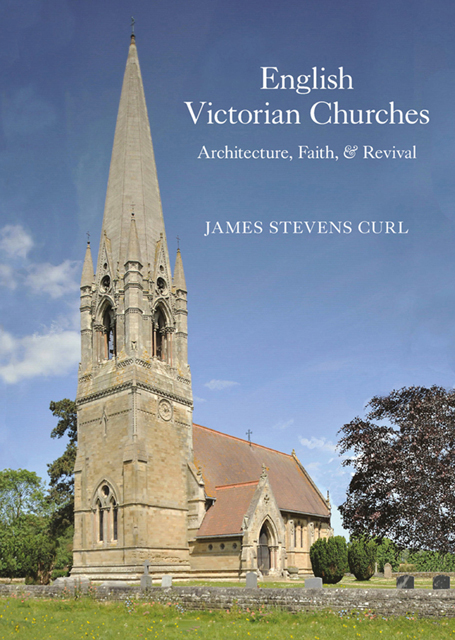Book contents
- Frontmatter
- Dedication
- Contents
- Foreword by Barry Orford
- Preface and Acknowledgements
- Note on Illustrations
- 1 An Introduction to Denominations and Victorian Churches
- 2 Architecture, Antiquarianism, and Styles
- 3 The Religious Atmosphere in the 1830s and 1840s
- 4 Recusants, Goths, Converts, Ultramontanes, and Controversies
- 5 The Anglican Revival
- 6 The Search for an Ideal
- 7 Church Architecture of the 1850s, 1860s, and Early 1870s
- 8 The Late Victorian Anglican Church in Several Manifestations
- 9 Non-Anglican Buildings for Religious Observance
- 10 Epilogue
- Select Glossary
- Select Bibliography
- Index
6 - The Search for an Ideal
Published online by Cambridge University Press: 08 June 2023
- Frontmatter
- Dedication
- Contents
- Foreword by Barry Orford
- Preface and Acknowledgements
- Note on Illustrations
- 1 An Introduction to Denominations and Victorian Churches
- 2 Architecture, Antiquarianism, and Styles
- 3 The Religious Atmosphere in the 1830s and 1840s
- 4 Recusants, Goths, Converts, Ultramontanes, and Controversies
- 5 The Anglican Revival
- 6 The Search for an Ideal
- 7 Church Architecture of the 1850s, 1860s, and Early 1870s
- 8 The Late Victorian Anglican Church in Several Manifestations
- 9 Non-Anglican Buildings for Religious Observance
- 10 Epilogue
- Select Glossary
- Select Bibliography
- Index
Summary
It had long been a project of the Cambridge Camden Society to found a model church, which should realise in its design and internal arrangements a beau ideal of architectural beauty, and fulfil at the same time the requirements of orthodox ritual. Some years after the Society was transferred to London, an opportunity presented itself for the execution of this scheme.
Charles Locke Eastlake (1836–1906): A History of the Gothic Revival (London: Longmans, Green, & Co., 1872), 251.I believe, and sincerely hope, in spite of the opposition of the champions of the ‘Classic’, that a style will grow upon the hitherto but little understood principles of the Mediæval style, as different as that of the fourteenth from that of the twelfth century, and as conformable to the progress of invention.
Edward William Godwin (1833–86): ‘Gothic or Classic’ in The Builder xv (28 March 1857), 176.The Anglican Crisis
The Ecclesiological Society’s campaign to restore the beauty of liturgical practice in appropriate settings, aided by such works as Hierurgia Anglicana, was helped by clerics who began to rise to positions of eminence within the Anglican Church. William Maskell, Oxford-educated liturgical scholar, High Churchman, and mediævalist, was appointed (1842) Rector of Corscombe, Dorset, but shortly afterwards resigned his living to devote himself to detailed research into Anglican ritual. He made major contributions to liturgical studies with The Ancient Liturgy of the Church of England, according to the uses of Sarum, York, Hereford, and Bangor, and the Roman Liturgy arranged in parallel columns, with Preface and Notes (1844), followed by Monumenta ritualia ecclesiæ Anglicanæ; or, Occasional offices of the Church of England according to the ancient use of Salisbury (1846–7). Maskell’s works gave impetus to the revival of Anglican ceremonial based on mediæval precedents, but, perhaps even more importantly, helped the evolution of what became known as Ritualism, in which the Eucharist was placed once again at the centre of Anglican worship. These important, scholarly publications put Maskell in the front rank of English ecclesiastical antiquaries: he was appointed domestic chaplain to Henry Phillpotts, Bishop of Exeter, and instituted (1847) Vicar of St Mary’s, Torquay, Devon.
One of his first duties was to assist Phillpotts in the celebrated Gorham case.
- Type
- Chapter
- Information
- English Victorian ChurchesArchitecture, Faith, and Revival, pp. 83 - 110Publisher: Boydell & BrewerPrint publication year: 2022



